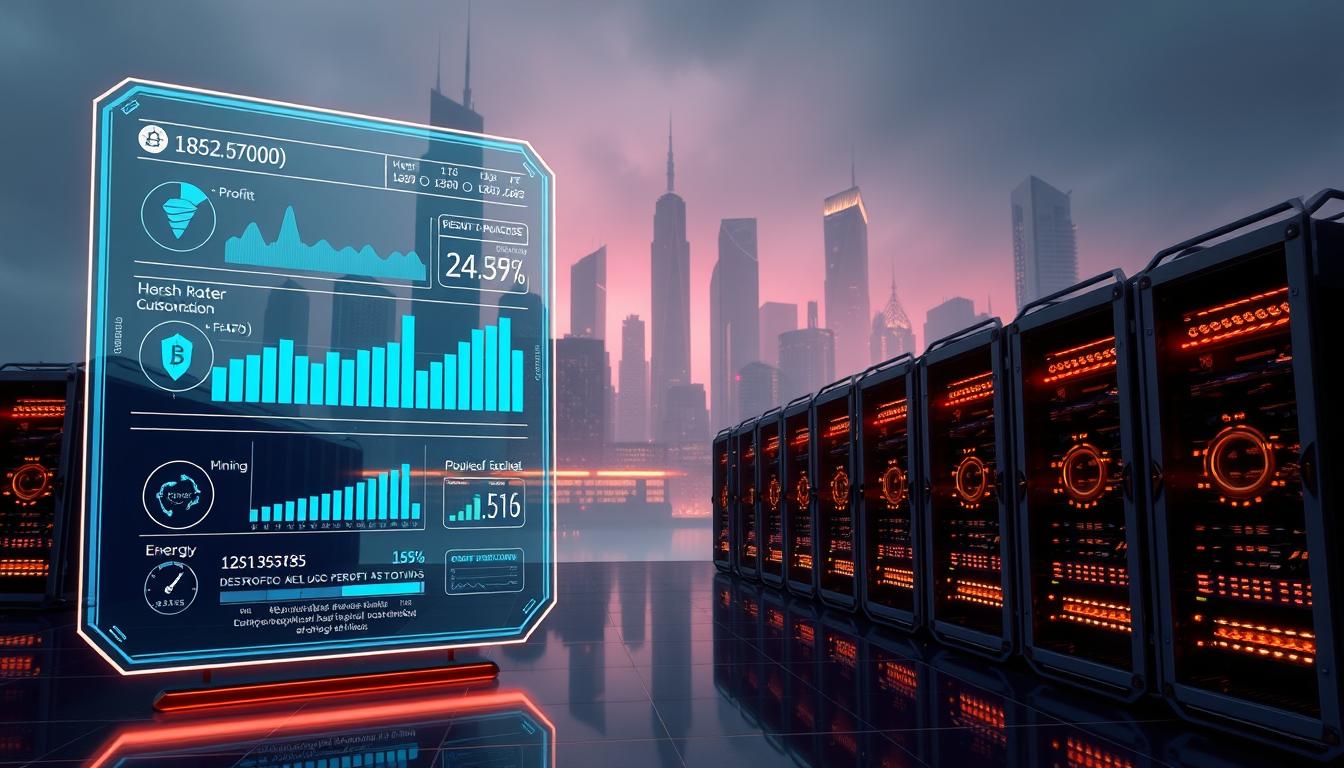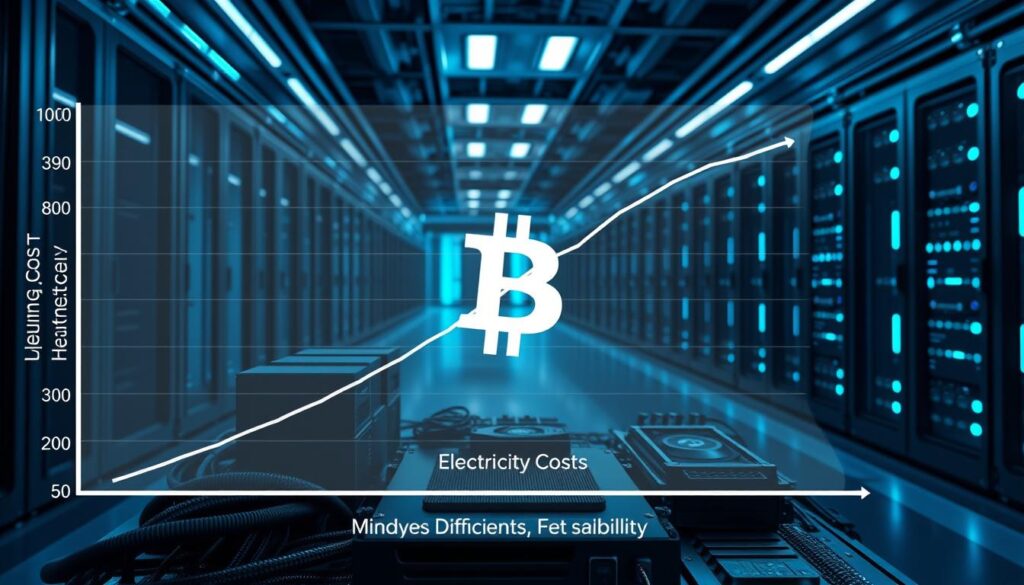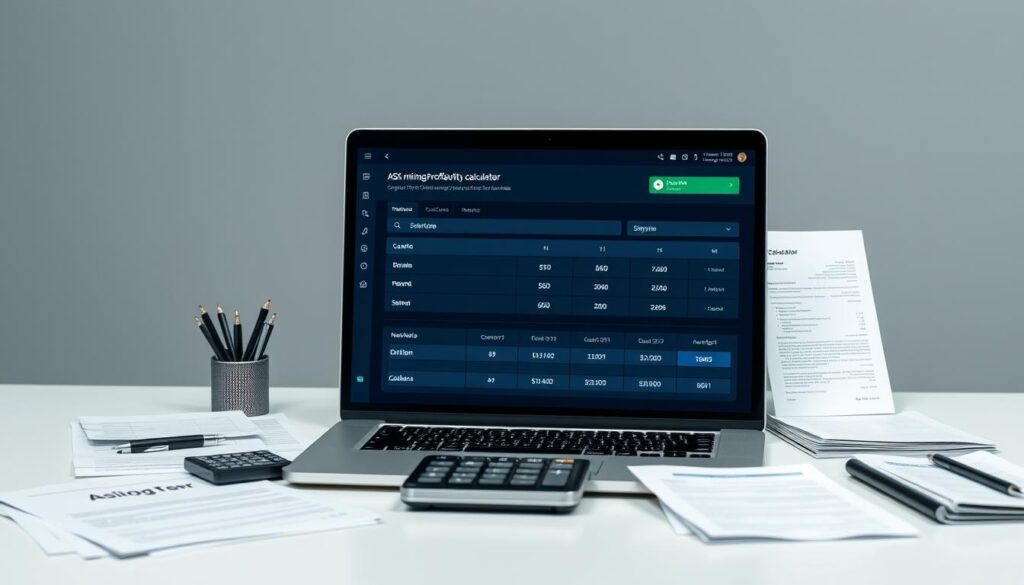Now Reading: Calculate Mining Profits with AI Crypto Mining Profitability Calculators
- 01
Calculate Mining Profits with AI Crypto Mining Profitability Calculators
Calculate Mining Profits with AI Crypto Mining Profitability Calculators

Starting a mining operation requires careful planning. Modern tools help you estimate potential earnings before you buy any equipment. These advanced systems process many factors at once.
Getting an accurate profit estimate is crucial for success. The value of btc changes often, and mining becomes more difficult over time. Knowing your potential income helps you decide if the investment is smart.
Today’s tools are far better than old, basic calculators. They use smart technology to analyze network growth and electricity costs. This gives a much more reliable picture of your future profit.
This guide will show you how to use these powerful resources. You will learn to understand the key factors that affect your bottom line. We will also explore how to analyze market data for smarter choices.
Key Takeaways
- Advanced calculators provide essential estimates before you invest in hardware.
- Accurate projections are vital due to constant btc price changes.
- Modern tools factor in electricity costs and network hash rate for better accuracy.
- Understanding key variables helps you avoid costly mistakes.
- These tools are useful for both beginners and experienced operators.
- Using up-to-date data is critical for realistic profit expectations.
Understanding Crypto Mining Profitability
To make informed decisions about hardware investments, you must grasp the core elements that drive returns. Several dynamic factors work together to determine your actual earnings.

Role of Bitcoin Price and Network Hash Rate
The value of btc directly affects your dollar returns. When the price rises, your mining rewards become more valuable. This can help balance other challenges.
Network hash rate grows about 0.45% daily. This means your equipment’s share of the total network decreases over time. Even with the same hardware, your earnings potential declines as competition increases.
Assessing Power Consumption and ASIC Efficiency
Electricity costs are a major expense. Your power consumption directly reduces net profit. Efficient hardware makes a significant difference.
Modern ASIC miners vary in their power efficiency. Better models produce more computational work per watt. This consumption efficiency directly impacts your bottom line.
Regional electricity rates also matter greatly. Areas with cheap power can make operations viable where high-cost locations would result in losses despite earning btc.
Advantages of AI Crypto Mining Profitability Calculators
The evolution of digital computation assessment has transformed how operators evaluate potential returns. These sophisticated tools process complex variables to deliver realistic projections.
Input Variables and Configurable Settings
Users configure four essential inputs for accurate results. Hash rate measured in th/s determines computational power. Modern asic units range from 97 to 140 th/s or higher.
The current btc price and electricity costs complete the foundation. Operators can model different market scenarios by adjusting the btc value. This flexibility accounts for market volatility.

Calculator Assumptions and Real-World Adjustments
These systems use standardized assumptions for consistent results. The block reward remains fixed at 3.125 btc. Current network difficulty provides the baseline.
Real-world adjustments improve accuracy beyond basic calculations. Maintenance costs, cooling expenses, and pool fees affect net profit. Actual power consumption often differs from manufacturer specs.
Integrating ASIC Models and Performance Data
Different hardware models show varying efficiency levels. The Antminer S19 XP delivers 138 th/s with 3250 watts power consumption. This generates approximately $2,588 annual profit.
Compare this to the Antminer S19 Pro+ at 120 th/s but 5,445 watts. Higher power requirements reduce net earnings to about $553. Efficiency directly impacts bottom-line results.
Regular recalculations maintain optimal profit margins as conditions change. These tools provide dynamic insights for informed operational decisions.
Mining Profit Insights from Market Data
Analyzing real-world hardware performance reveals critical insights for maximizing returns. The current market offers a wealth of data on how different equipment performs under various conditions.
This information helps you predict actual earnings more accurately. It goes beyond simple specifications.
Evaluating ASIC Timings and Power Consumption Trends
Newer asic models consistently push the boundaries of efficiency. They achieve higher hash rates while drawing less electricity.
This trend is crucial as the btc network’s difficulty increases daily. Lower power consumption directly protects your bottom line.

Graphics card optimization provides another layer of market intelligence. For instance, AMD 6000 series cards use Fast Timings with low voltage settings.
This approach minimizes power use while maintaining strong performance. NVIDIA cards also benefit from targeted power tuning.
- Algorithm-Specific Settings: A card’s configuration changes based on the coin being earned. A setting for one algorithm may not work for another.
- Real-World Consumption: Actual electricity consumption often differs from factory specs. Cooling and environment play a big role.
- Informed Decisions: Studying this data helps you choose hardware that fits your local electricity costs. This is key for a successful home operation with low electricity costs.
Staying updated on hardware results is essential. The best equipment choice today might change as the btc landscape evolves. Smart operators use this data to stay ahead.
Conclusion
Ultimately, navigating the complexities of this field demands a data-driven approach from the outset. Modern forecasting tools are indispensable for providing realistic projections.
They help you understand how hash rate, power consumption, and the price of btc interact. This prevents reliance on guesswork.
Accurate calculations must include real-world costs like cooling and maintenance. These factors significantly impact your final profit.
Choosing the right hardware is critical. Your potential rewards and overall income depend on equipment efficiency.
The landscape is always changing. Regular reassessment of your results is essential for maintaining positive returns.
Informed decision-making, based on comprehensive data, forms the foundation for a sustainable and successful operation.
FAQ
What is the main purpose of a mining profitability calculator?
The main purpose is to provide an estimate of potential income from operating mining hardware. It helps you understand your potential rewards by analyzing key factors like your hardware’s hash rate, current power consumption, and the prevailing market conditions for the digital asset.
How does the Bitcoin price affect my mining results?
The Bitcoin price is a primary driver of your income. A higher market value for BTC means the rewards you earn are worth more. If the price drops significantly, your operational costs, especially electricity, may outweigh your earnings, leading to a loss.
Why is my ASIC miner’s power consumption so important?
Power consumption is your largest ongoing expense. An efficient ASIC, measured in joules per terahash, uses less electricity to produce the same amount of work. High power draw can erase your profit, making efficiency a top priority for sustainable operations.
What input variables do I need to use a profitability calculator?
You typically need to input your hardware’s hash rate (e.g., in TH/s), its power consumption in watts, your local electricity cost per kWh, and the current network difficulty. Some advanced tools also let you adjust pool fees and forecast future market trends.
How accurate are the profit estimates from these tools?
The estimates are based on current market data and are a reliable starting point. However, they are projections. Real-world results can change due to fluctuations in network hash rate, Bitcoin’s value, and hardware performance. It’s wise to use these figures as a guide, not a guarantee.
Can I compare different ASIC models using a calculator?
Yes, absolutely. By entering the specifications for various ASIC miners—like an Antminer S19 Pro versus a Whatsminer M50—you can directly compare their potential income and efficiency. This helps you make an informed decision on which machine offers the best return on investment for your situation.














